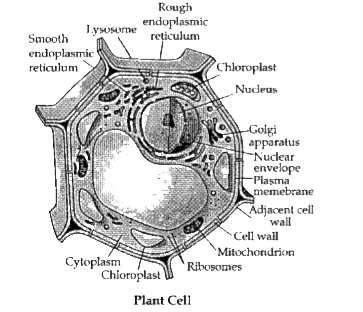Draw a neat and labelled diagram of a plant cell.
Video Solution
Text Solution
|
Updated on:21/07/2023
Related Playlists
- BOOK - ICSECHAPTER - CELL:THE UNIT OF LIFE EXERCISE - TOPIC 3(3 Mark Questions )2videos
CELL:THE UNIT OF LIFE
- BOOK - ICSECHAPTER - CELL: THE UNIT OF LIFEEXERCISE - REVIEW QUESTIONS (E. STRUCTURED/APPLICATION/SKILL TYPE)3videos
CELL: THE UNIT OF LIFE
- BOOK - ICSECHAPTER - DIGESTIVE SYSTEM EXERCISE - PROGRESS CHECK42videos
DIGESTIVE SYSTEM
Similar Questions
Draw a neat and labelled diagram of a tooth.
View SolutionDraw a neat and labelled diagram of a neuron.
View SolutionDraw a neat labelled diagram of an animal cell.
View SolutionDraw a neat and labelled diagram of an electric bell and describe its working.
View SolutionDraw a neat and labelled diagram of a mature anatropous ovule before fertilisation.
View SolutionDraw a neat and labelled diagram of a multipolar neuron and write two differences between an axon and dendron.
View SolutionDraw a neat labelled diagram of a biogas plant.
View SolutionDraw a neat and labelled diagram of the chloroplast.
View SolutionDraw a labelled diagram of a nerve cell.
View SolutionDraw a neat and labelled diagram of a screw gauge. Name its main parts and state their functions.
View Solution



